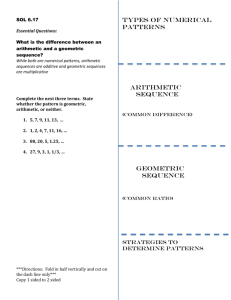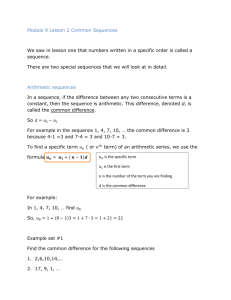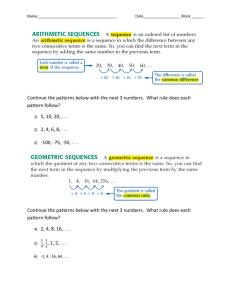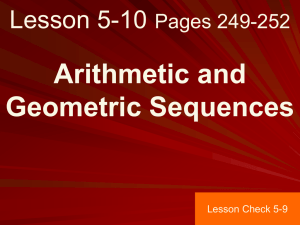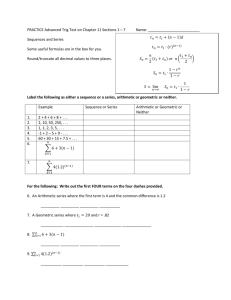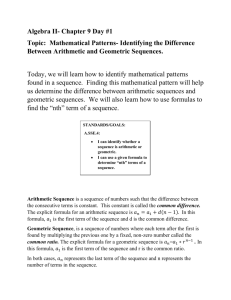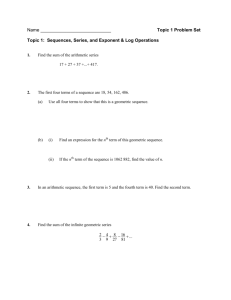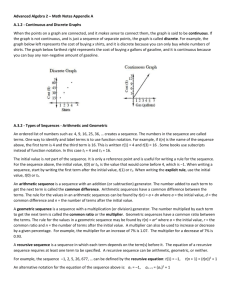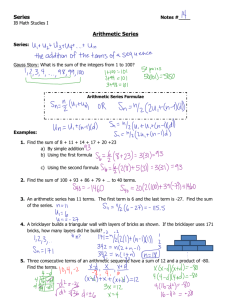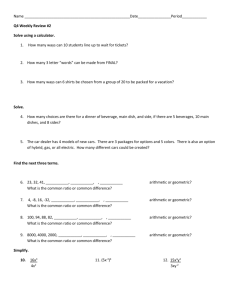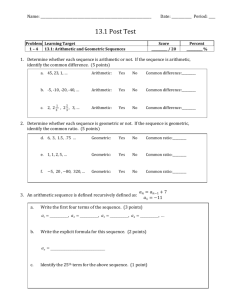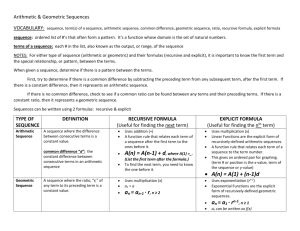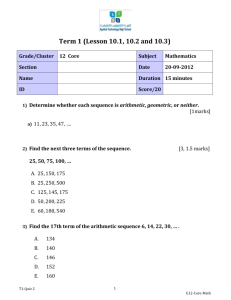Mini lecture: Arithmetic and Geometric Sequences
advertisement
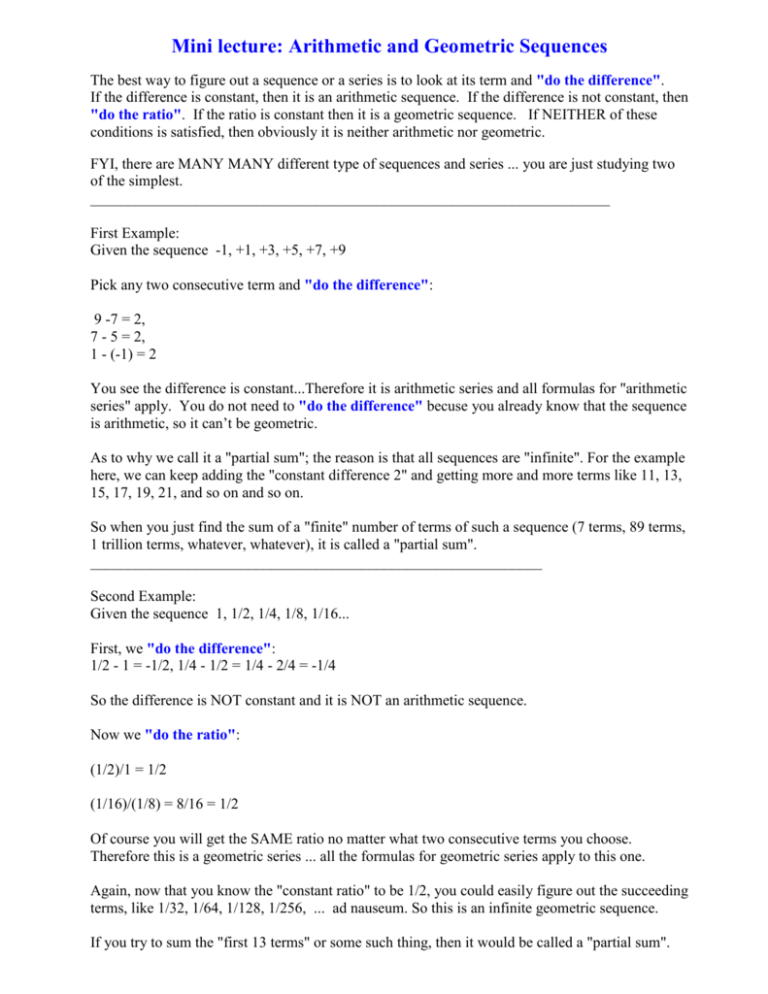
Mini lecture: Arithmetic and Geometric Sequences The best way to figure out a sequence or a series is to look at its term and "do the difference". If the difference is constant, then it is an arithmetic sequence. If the difference is not constant, then "do the ratio". If the ratio is constant then it is a geometric sequence. If NEITHER of these conditions is satisfied, then obviously it is neither arithmetic nor geometric. FYI, there are MANY MANY different type of sequences and series ... you are just studying two of the simplest. _____________________________________________________________________ First Example: Given the sequence -1, +1, +3, +5, +7, +9 Pick any two consecutive term and "do the difference": 9 -7 = 2, 7 - 5 = 2, 1 - (-1) = 2 You see the difference is constant...Therefore it is arithmetic series and all formulas for "arithmetic series" apply. You do not need to "do the difference" becuse you already know that the sequence is arithmetic, so it can’t be geometric. As to why we call it a "partial sum"; the reason is that all sequences are "infinite". For the example here, we can keep adding the "constant difference 2" and getting more and more terms like 11, 13, 15, 17, 19, 21, and so on and so on. So when you just find the sum of a "finite" number of terms of such a sequence (7 terms, 89 terms, 1 trillion terms, whatever, whatever), it is called a "partial sum". ____________________________________________________________ Second Example: Given the sequence 1, 1/2, 1/4, 1/8, 1/16... First, we "do the difference": 1/2 - 1 = -1/2, 1/4 - 1/2 = 1/4 - 2/4 = -1/4 So the difference is NOT constant and it is NOT an arithmetic sequence. Now we "do the ratio": (1/2)/1 = 1/2 (1/16)/(1/8) = 8/16 = 1/2 Of course you will get the SAME ratio no matter what two consecutive terms you choose. Therefore this is a geometric series ... all the formulas for geometric series apply to this one. Again, now that you know the "constant ratio" to be 1/2, you could easily figure out the succeeding terms, like 1/32, 1/64, 1/128, 1/256, ... ad nauseum. So this is an infinite geometric sequence. If you try to sum the "first 13 terms" or some such thing, then it would be called a "partial sum".




